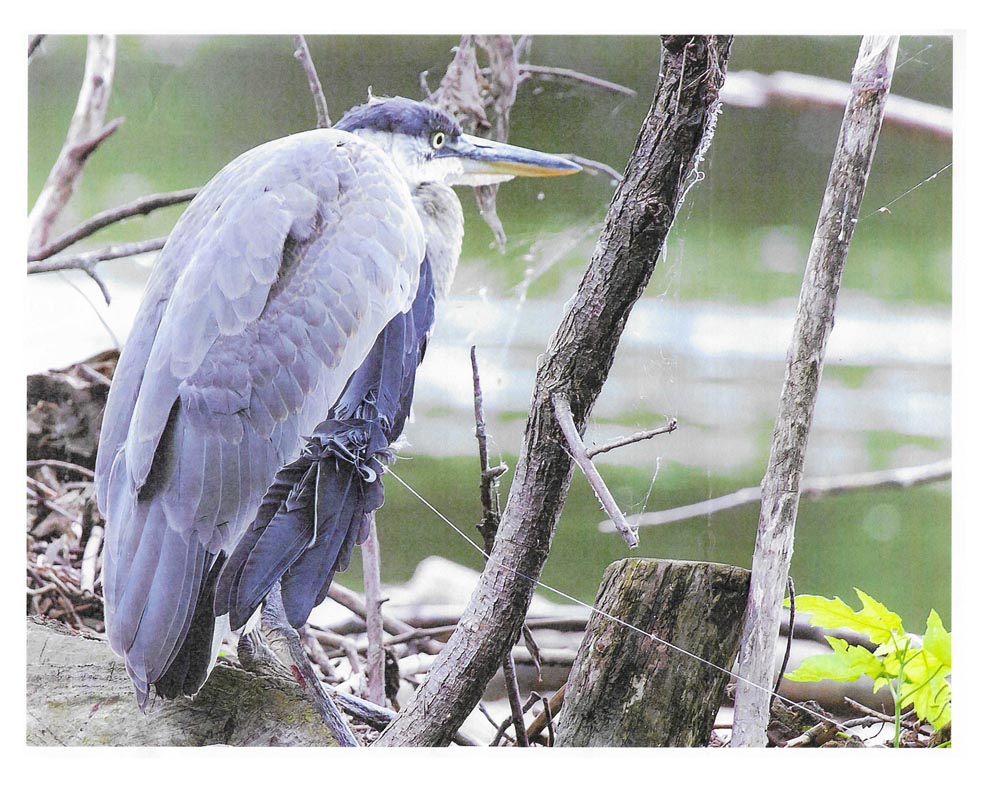

When she was gliding on to the Fox River, I named her Michele. Andea Herodias, herons will live approximately 15 years in the wild.
She seemed to show qualities of grace, poise, reflection, and symmetry. Her ancestors were noted in 1758 in North America especially in Kansas and Oklahoma and sightings in southeastern Georgia.
In Winter her range extends south through Florida, Mexico, and the Caribbean to South America. Her hardiness is such that she often may remain through cold northern Winters, as well, as long as fish-bearing waters remain unfrozen, such as wetlands, streams, creeks and rivers.
Michele will find a nest in a tree or bush near water’s edge which minimizes the possibility of a predator. Her primary diet is small fish. She may find shrimp, crabs, aquatic insects, rodents, reptiles and ducklings. Her primary prey is based on availability and abundance. She finds her food by sight and usually will swallow it whole. Michele is a solitary feeder.
Her common hunting technique is wading slowly with her long legs through shallow water and quickly spearing fish or frogs with her long sharp bill. She may stand in one place probing, pecking, walking at slow speeds, and then move quickly in flying short distances and alighting. She may hover over water and pick up prey by diving head first into the water, and swimming, or floating on the surface of the water.
Michele will breed in a colony with the group called heronry. The size of her colony may contain between five and 500 nests near ideal feeding locations. Nests may be used for many years and herons are socially monogamous within a single breeding season and she may choose a new mate each year. Her nest is a bulky stick nest. If trees are not available, she will find nest on the ground, sagebrush, cacti, channel-markers, artificial platforms, beaver mounds, or on duck blinds.
Mating displays may include bill-snapping, neck stretching, crest-raising, preening, circular flights, twig-shaking, and loud cries. Scuffles over females are common.
She will lay three to six pale blue eggs with one brood yearly. Eggs are usually laid at two-day intervals, incubated approximately 27 days and hatch over a period of days. Males will incubate for approximately 10 hours each day while Michele will incubate for the remainder of each day. She will leave her eggs for about six minutes of each hour to forage for her food. Her young herons will take their first flight approximately 55 days later.
The young herons will return to the nest to be fed for about another three weeks. Michele will consume up to four times as much food when she is feeding young chicks. When they grow fully mature, herons will be the very image of elegance and grace.
Michele has done well breeding her chicks and caring for them until they fly on their own. Such a magnificent bird in flight! In flight their long necks draw into their shoulders and exhibit slow irregular wing beats.
Perfect poetry in motion.

